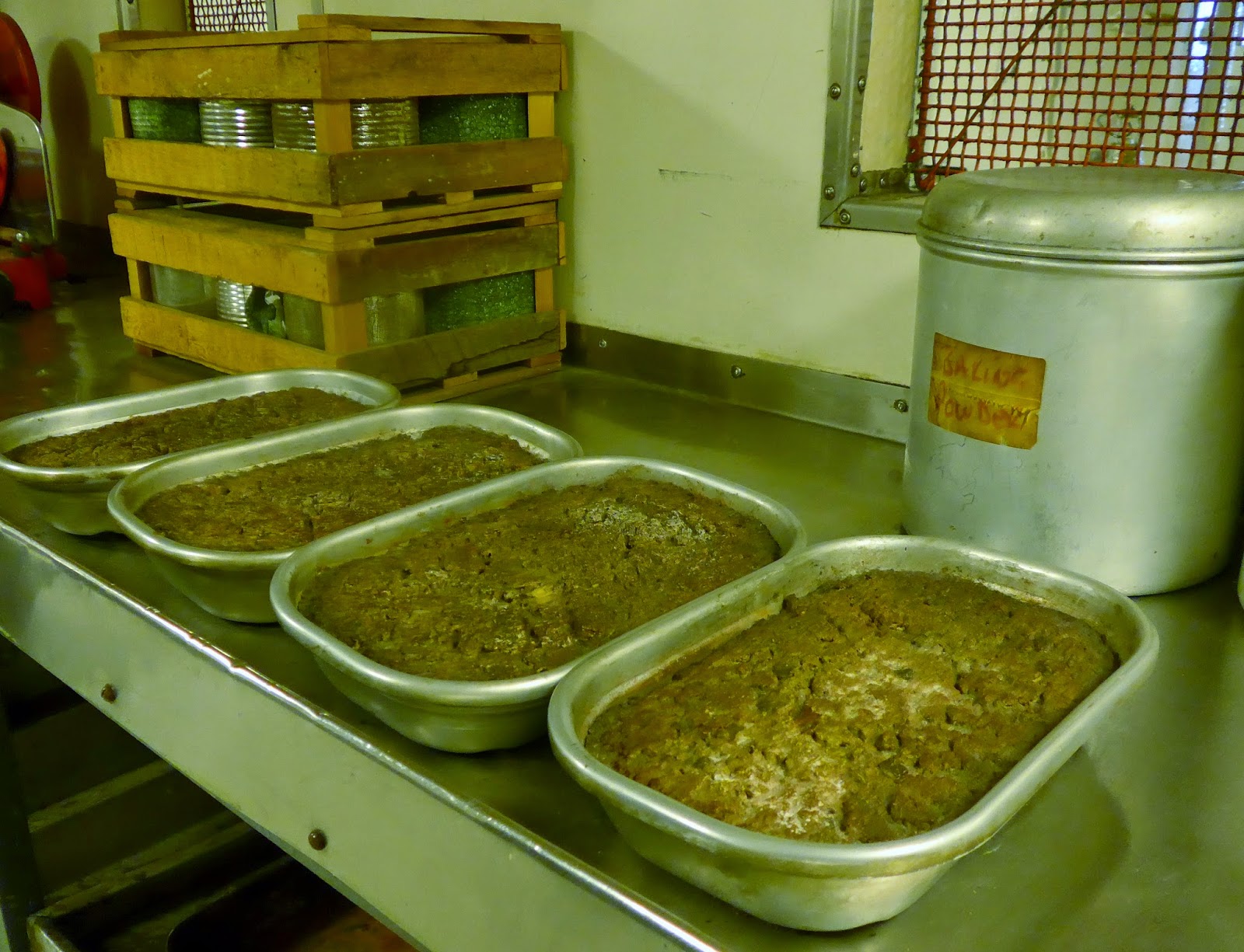I have looked at Life on Board HMS Belfast in a previous post, here.
Food, laundry, spare-time, sleep and shopping.
But HMS Belfast is a war ship,
commissioned in 1939,
at the beginning of the second World War.
My kids have studied the second world war,
in both primary and secondary school.
Would this ship connect to the history they had learnt at school?
What would our kids make of war?
What did war at sea look like?
There are guns.
These guns, if fired, would hit Scratchwood motorway services,
the southernmost services on the M1, 14 miles away.
Deep below deck,
shells are stored, ready to be sent to the gun turrets.
Each 6" shell weighs as much as two small children.
We could demonstrate that weight, sometimes it's useful having twins.
Steering the ship was done from a safe position, below deck,
but you still had to wear your anti-flash gloves and hoods
to protect you in the event of fire.
War is strategic, it involves planning,
team work where every man had a specific job.
We worked together to locate aircraft parts,
studying the map, plotting journeys and moving ships and helicopters into position.
Ooops!
We did it!
It was important to take orders rather than 'selfies'.
If you didn't follow orders, and you misbehaved,
you could end up in the punishment cells
being shouted at and having to unwind rope.
Having been caught drunk on duty,
this guy is too busy throwing up into a bucket to unwind any more rope.
The top misdemeanours were being drunk, absent without leave and fighting.
For some reason the punishment cells appealed,
we fought to try out the wooden pillow.
Now moored on the Thames by the City of London
HMS Belfast doesn't look so big.
It is though.
It's two football pitches long and nine decks high,
they can all be explored, many are below the waterline.
It's two football pitches long and nine decks high,
they can all be explored, many are below the waterline.
All those different greys.
That's called dazzle paint, designed to confuse the enemy when it is spotted at sea.
It does a pretty good camouflage job in the City too.
As for war,
secondary school history has given them some context for the life of HMS Belfast,
the Second World War and later conflicts.
I learnt a lot from the older two.
For our primary school children, HMS Belfast was appreciated more for being a ship,
what it did and how it worked.
It is perhaps difficult to comprehend the realities of war for the crew on HMS Belfast,
at sea, in action.
I'll leave you with words from archive footage, heard in the Gun Turret Experience,
spoken by former crew who had fired those guns.
Food for thought.
"...we wanted to get the ships, not the crew..."
At that point, I gulped.
HMS Belfast is open everyday.
Occasionally there are still veterans on board to meet and hear their stories.
Details on their website, here.
I recommend the children's audio tour. It was the one we used for our family,
aged eleven to adult.





































